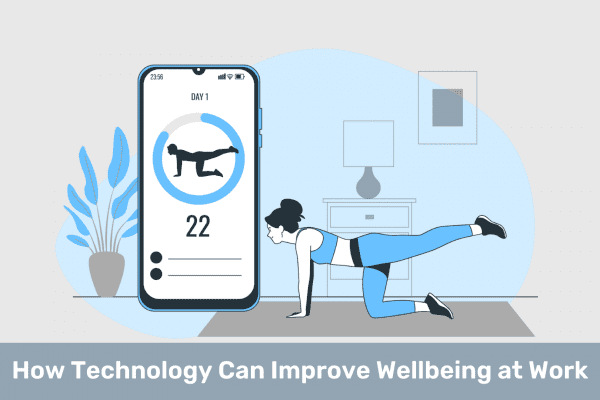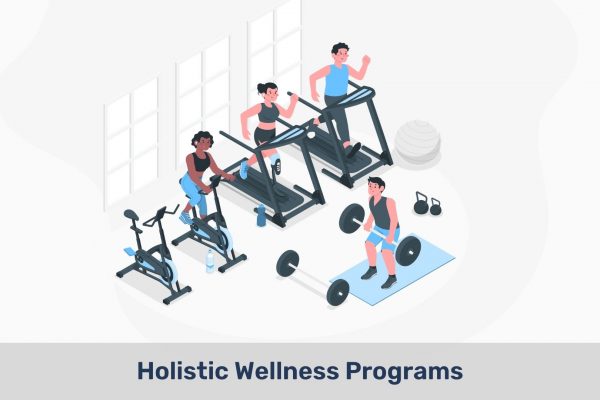Introduction
The role of HR has evolved significantly beyond traditional administrative functions over the period of time. One area where HR has increasingly taken center stage is in the development and implementation of workplace wellness programs. These programs are instrumental in promoting employee well-being, enhancing productivity, and promoting a positive organizational culture.
Statistics reveal the growing importance of workplace wellness programs and the pivotal role played by HR professionals in their execution.
- According to a recent survey conducted by the Society for Human Resource Management (SHRM), 86% of U.S. organizations offer some form of wellness program, ranging from health screenings to fitness initiatives and stress management workshops.
- Moreover, the same survey found that 71% of HR professionals believe that workplace wellness programs are effective in reducing healthcare costs, while 72% agree that such programs have a positive impact on employee morale and engagement.
In today’s highly competitive job market, organizations are increasingly recognizing the value of investing in their employees’ well-being as a strategic business imperative. This recognition is not only driven by a desire to attract and retain top talent but also by a growing body of research demonstrating the link between employee wellness and organizational performance. For instance, studies have shown that companies with robust wellness programs experience lower absenteeism rates, higher employee satisfaction levels, and greater overall productivity.
HR professionals play a pivotal role in successful implementation and management of wellness programs. From strategic planning and program development to communication and employee engagement, HR serves as the driving force behind the design, execution, and evaluation of these initiatives.
Let’s delve into the multifaceted role of HR in workplace wellness programs, exploring the various responsibilities and challenges faced by HR professionals in promoting employee well-being.
The Role of HR in Workplace Wellness Programs
A) Strategic Planning and Program Development
This critical phase involves meticulous analysis, collaboration with key stakeholders, and the formulation of targeted initiatives to address employees’ health and well-being needs effectively. Here are three key points outlining the role of HR in workplace wellness programs for strategic planning and program development:
Conducting Needs Assessments and Employee Surveys:
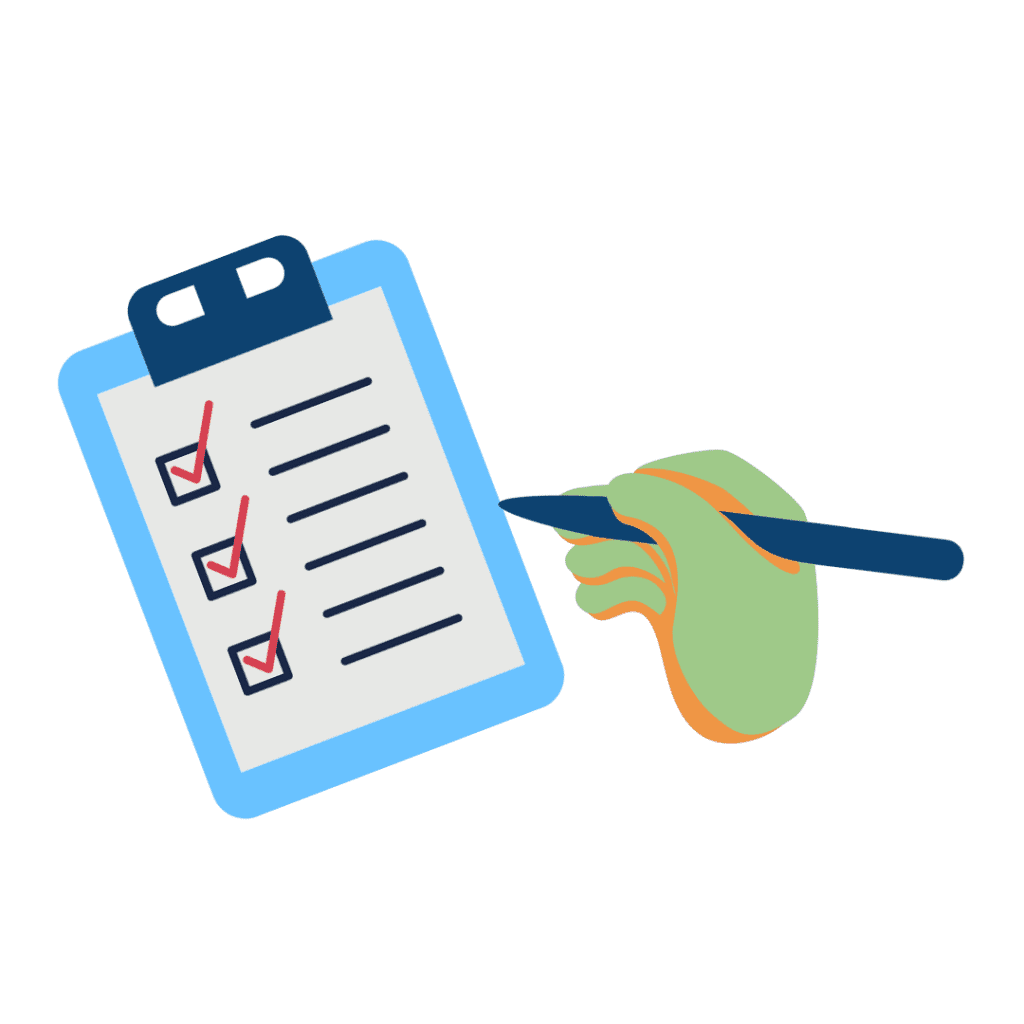
-
- HR conducts comprehensive needs assessments and employee surveys to gain insights into the specific health and wellness needs of the workforce.
-
- By gathering data on employee demographics, health concerns, lifestyle habits, and preferences, HR can identify areas for improvement and tailor wellness initiatives accordingly.
-
- Needs assessments may include evaluating existing healthcare utilization data, analyzing absenteeism rates, and conducting focus groups or one-on-one interviews with employees to understand their wellness challenges and preferences.
Collaborating with Management to Define Program Goals and Objectives:

-
- HR collaborates closely with senior management and other relevant stakeholders to define clear and measurable goals and objectives for the workplace wellness program.
-
- This collaboration ensures alignment between the wellness initiatives and the organization’s broader strategic objectives, such as improving employee productivity, reducing healthcare costs, or enhancing employee retention.
-
- By engaging management early in the process, HR can secure buy-in and support for the wellness program, creating a culture of organizational commitment to employee well-being.
Designing and Implementing Tailored Wellness Initiatives:

-
- Building upon the insights gathered from needs assessments and employee surveys, HR designs and implements tailored wellness initiatives that address the specific health and wellness needs of the workforce.
-
- These initiatives may encompass a wide range of wellness offerings, including physical fitness programs, mental health resources, nutrition education, stress management workshops, smoking cessation programs, and more.
-
- HR takes a holistic approach to wellness, considering the diverse needs and preferences of employees across different demographics, job roles, and locations, to ensure inclusivity and effectiveness.
B) Communication and Employee Engagement
HR professionals play a pivotal role in ensuring that employees are well-informed, motivated, and actively involved in these initiatives. Here are key aspects of HR’s role in communication and employee engagement within workplace wellness programs:
Promoting Awareness of Wellness Programs through Various Communication Channels:

-
- Utilizing multiple communication channels such as email, intranet, newsletters, and digital signage to disseminate information about wellness programs.
-
- Crafting clear and compelling messages that highlight the benefits of participating in wellness activities, including improved health outcomes, reduced stress, and increased productivity.
-
- Tailoring communication strategies to reach diverse employee demographics and accommodate different learning styles and preferences.
Encouraging Employee Participation and Engagement through Targeted Messaging:

-
- Developing targeted messaging campaigns to resonate with specific employee groups based on their interests, needs, and preferences.
-
- Leveraging storytelling and testimonials from employees who have benefited from wellness programs to inspire others to participate.
-
- Implementing gamification elements such as activity challenges, competitions, and incentives to make wellness activities fun and engaging.
-
- Providing regular updates and reminders to keep employees informed and motivated to participate in wellness initiatives.
Organizing Wellness Events and Campaigns to Promote a Culture of Well-Being:

-
- Collaborating with cross-functional teams and external vendors to plan and execute wellness events, workshops, and seminars.
-
- Creating themed wellness campaigns aligned with organizational goals and priorities, such as stress management, nutrition, fitness, or mental health awareness.
-
- Incorporating a variety of activities and resources into wellness events, including fitness classes, health screenings, educational sessions, and wellness challenges.
-
- Evaluating the effectiveness of wellness events and campaigns through employee feedback surveys, participation rates, and health outcome metrics, and using insights to refine future initiatives.
C) Program Administration and Coordination
The role of HR in workplace wellness programs works as the backbone to ensure smooth execution and effective management.
Overseeing Program Logistics, Including Scheduling and Budgeting:

-
- HR professionals are responsible for coordinating all logistical aspects of workplace wellness programs, including scheduling events, workshops, and activities.
-
- This involves developing comprehensive timelines, setting realistic milestones, and ensuring that all activities are seamlessly integrated into employees’ work schedules.
-
- Furthermore, HR oversees budget allocation for wellness initiatives, ensuring that resources are effectively utilized to maximize program impact while adhering to financial constraints.
Managing Vendor Relationships and Partnerships for Wellness Services:

-
- HR plays a critical role in identifying, selecting, and managing relationships with external vendors and partners who provide wellness services and resources.
-
- This involves conducting thorough research to identify reputable vendors, negotiating contracts, and establishing mutually beneficial partnerships.
-
- HR professionals collaborate closely with vendors to customize wellness offerings to meet the specific needs and preferences of the organization’s workforce.
-
- Additionally, HR monitors vendor performance, addresses any issues or concerns, and evaluates the effectiveness of wellness services to ensure alignment with organizational goals.
Ensuring Compliance with Regulations and Policies Related to Employee Health and Safety:

-
- HR is tasked with ensuring that workplace wellness programs comply with all relevant regulations, laws, and company policies pertaining to employee health and safety.
-
- This includes staying abreast of changes in legislation and industry standards related to wellness initiatives and implementing necessary adjustments to maintain compliance.
-
- HR professionals also work closely with legal and compliance teams to develop policies and procedures that safeguard employee well-being while mitigating potential risks.
-
- Additionally, HR educates employees on their rights and responsibilities regarding workplace wellness programs, including confidentiality, consent, and data privacy considerations.
D) Data Analysis and Evaluation
One of the pivotal roles of HR in workplace wellness programs is to collect, analyze, and evaluate data to measure the effectiveness of these initiatives. This data-driven approach allows HR professionals to make informed decisions, identify areas for improvement, and refine future program offerings.
Collecting and Analyzing Data on Program Participation and Outcomes:

-
- HR is responsible for collecting comprehensive data on employee participation in wellness programs. This includes tracking attendance at wellness events, participation in fitness challenges, utilization of wellness benefits, and engagement with wellness resources.
-
- Additionally, HR gathers data on the outcomes of these programs, such as changes in health behaviors, improvements in health metrics (e.g., reduced blood pressure, weight loss), and feedback from participants regarding program effectiveness.
-
- Through the systematic collection and analysis of this data, HR gains valuable insights into the reach and impact of workplace wellness initiatives.
Monitoring Key Metrics to Assess Effectiveness:
![]()
-
- HR monitors key metrics to assess the effectiveness of wellness initiatives in achieving organizational goals. These metrics may include healthcare cost savings, reduction in absenteeism rates, improvements in employee morale and engagement, and overall satisfaction with wellness programs.
-
- By tracking these metrics over time, HR can gauge the success of specific interventions and identify areas where additional support or resources may be needed.
-
- Moreover, HR collaborates with other departments, such as finance and healthcare benefits, to obtain relevant data and ensure a comprehensive evaluation of wellness program effectiveness.
Using Insights to Refine and Improve Future Program Offerings:

-
- Based on data analysis and evaluation, HR uses insights to refine and improve future program offerings. This may involve adjusting program components based on participant feedback, revising communication strategies to increase engagement, or introducing new initiatives to address emerging wellness needs.
-
- HR leverages data-driven insights to tailor wellness programs to the unique needs and preferences of the workforce, thereby maximizing participation and effectiveness.
-
- Furthermore, HR proactively seeks input from employees and solicits feedback on wellness initiatives, promoting a culture of continuous improvement and innovation in workplace wellness programming.
E) Support and Resources for Employees:
Through proactive collaboration and coordination with various departments, HR ensures that employees have access to a holistic support system that addresses their diverse wellness needs, ultimately contributing to a healthier, happier, and more engaged workforce.
Providing access to resources and tools for physical and mental well-being:
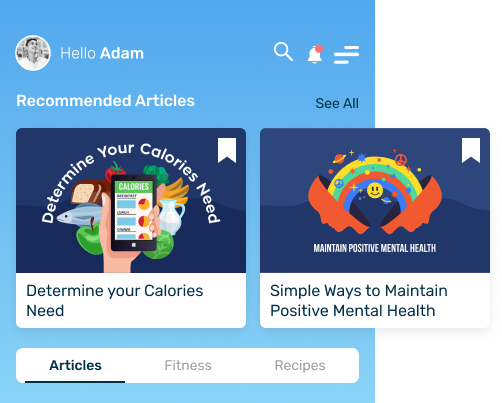
-
- HR plays a crucial role in ensuring that employees have access to a wide range of resources and tools to support their physical and mental well-being. This includes providing access to gym facilities, offering discounts on fitness memberships, and organizing wellness workshops or seminars focused on topics such as nutrition, stress management, and mindfulness.
-
- Additionally, HR may facilitate access to mental health resources such as counseling services or Employee Assistance Programs (EAPs), which can provide confidential support for employees dealing with personal or work-related challenges.
Offering guidance and support for employees seeking wellness-related benefits:

-
- HR serves as a central point of contact for employees seeking information and guidance on wellness-related benefits offered by the organization. This includes health insurance coverage for preventive care, mental health services, and wellness incentives such as reimbursement for gym memberships or participation in health challenges.
-
- HR professionals are responsible for educating employees about available benefits, assisting them in understanding coverage options, and facilitating the enrollment process. They may also provide personalized guidance to help employees make informed decisions based on their individual wellness needs and goals.
Collaborating with other departments to address specific employee needs:

Recognizing that employee well-being is influenced by various factors beyond the workplace, HR collaborates with other departments to address specific employee needs comprehensively. For example:
-
- Collaborating with the Facilities team to create a conducive work environment that promotes physical health, such as ergonomic workstations or designated relaxation areas.
-
- Partnering with the Learning and Development team to offer training programs on topics like work-life balance, resilience, and time management.
-
- Working with the Diversity, Equity, and Inclusion team to ensure that wellness initiatives are inclusive and accessible to employees from diverse backgrounds and experiences.
-
- Coordinating with the Benefits team to integrate wellness programs seamlessly with existing employee benefits packages and ensure alignment with organizational goals.
Challenges and Best Practices
A. Common challenges faced by HR in implementing workplace wellness programs:
-
- Lack of Employee Participation: One of the most common challenges HR faces is low employee participation rates in wellness programs. Despite offering a variety of initiatives, some employees may be hesitant to engage due to perceived time constraints, lack of interest, or skepticism about program effectiveness.
-
- Limited Budget and Resources: HR often encounters constraints in budget and resources when developing and implementing wellness programs. This may restrict the scope of initiatives that can be offered and limit the effectiveness of existing programs.
-
- Resistance from Leadership: Another challenge HR may face is resistance or lack of buy-in from organizational leadership. Without top-level support, it can be difficult to secure the necessary resources and commitment to prioritize wellness initiatives within the organization.
-
- Measuring ROI and Program Effectiveness: HR professionals often struggle with quantifying the return on investment (ROI) of wellness programs and demonstrating their impact on employee health outcomes and organizational performance. Without clear metrics and data, it can be challenging to justify continued investment in wellness initiatives.
-
- Diversity and Inclusion: Ensuring that wellness programs are inclusive and accessible to all employees, including those from diverse backgrounds and with varying health needs, presents a significant challenge for HR. Tailoring programs to accommodate different demographics and addressing cultural sensitivities can be complex.
B. Best practices for overcoming these challenges and maximizing program effectiveness:
-
- Employee Engagement and Communication: Implement proactive communication strategies to promote wellness programs and engage employees at all levels of the organization. Utilize multiple communication channels, including email, intranet, posters, and workshops, to raise awareness and encourage participation.
-
- Tailored Program Design: Conduct needs assessments and gather employee feedback to design wellness programs that align with the specific needs and preferences of the workforce. Offer a variety of initiatives, including physical fitness activities, mental health resources, nutrition education, and stress management workshops. It helps employees to their diverse interests and needs.
-
- Leadership Support and Integration: Garner support from organizational leadership by emphasizing the business case for wellness programs and highlighting their potential impact on employee engagement, productivity, and retention. Integrate wellness initiatives into broader organizational strategies and goals to ensure alignment and prioritization.
-
- Data-Driven Approach: Implement data analytics and evaluation metrics to track program participation, measure outcomes, and assess ROI. Collect quantitative and qualitative data on employee health metrics, satisfaction levels, absenteeism rates, and healthcare costs. It helps in demonstrating the effectiveness of wellness programs and inform future decision-making.
-
- Inclusivity and Accessibility: Foster a culture of inclusivity by ensuring that wellness programs are accessible to all employees, regardless of their demographic background or health status. Offer flexible scheduling options, accommodate diverse preferences, and provide resources in multiple languages to cater to different needs and preferences.
Final Thoughts
The role of HR in workplace wellness programs is indispensable in creating a culture of health and well-being within organizations. They handles strategic planning and program development to communication, administration, and evaluation. HR professionals play a crucial role in designing, implementing, and managing wellness initiatives that enhance employee health, engagement, and productivity.
As organizations increasingly recognize the importance of prioritizing employee well-being, HR professionals face various challenges in effectively managing workplace wellness programs. These challenges include low employee participation, limited resources, resistance from leadership, and the need to measure program effectiveness.
However, HR professionals can overcome these challenges and maximize the impact of workplace wellness programs. They can implement best practices such as proactive communication, tailored program design, leadership support, data-driven evaluation, and inclusivity, 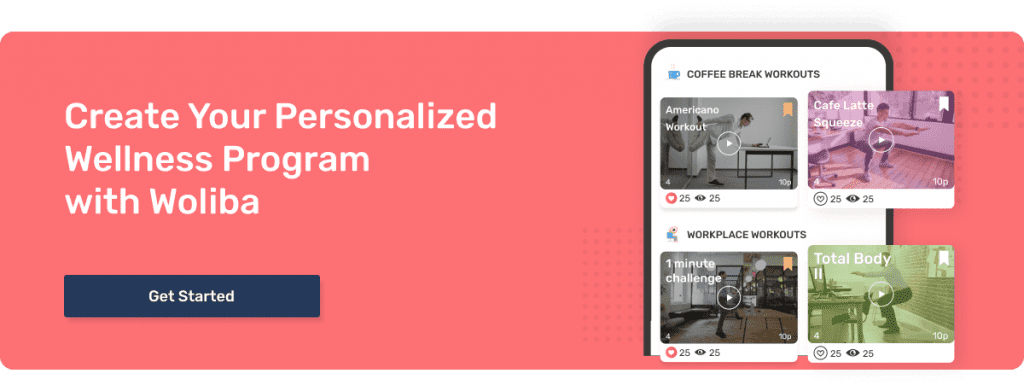
Woliba offers a comprehensive and robust solution designed to streamline program administration, enhance employee engagement, and drive measurable outcomes. It has features such as customizable wellness initiatives, automated communication tools, data analytics dashboards, and employee feedback mechanisms. Woliba empowers HR professionals to efficiently design, implement, and evaluate wellness programs that meet the diverse needs of their workforce.
By leveraging the Woliba platform, HR professionals can overcome common challenges, optimize program effectiveness, and ultimately create a healthier, happier, and more productive workplace environment for employees.
Contact us today!

